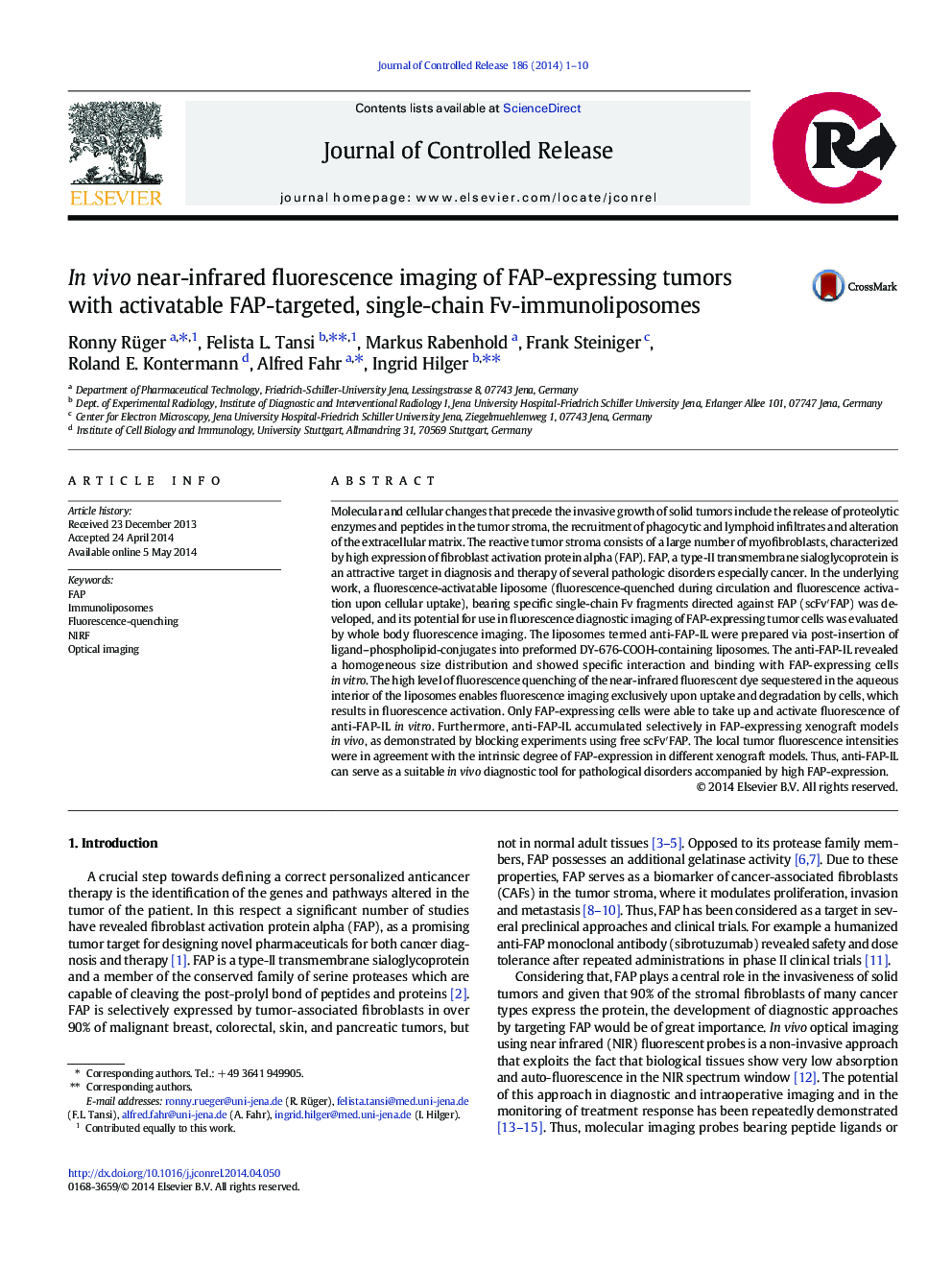| کد مقاله | کد نشریه | سال انتشار | مقاله انگلیسی | نسخه تمام متن |
|---|---|---|---|---|
| 1424023 | 1509063 | 2014 | 10 صفحه PDF | دانلود رایگان |

Molecular and cellular changes that precede the invasive growth of solid tumors include the release of proteolytic enzymes and peptides in the tumor stroma, the recruitment of phagocytic and lymphoid infiltrates and alteration of the extracellular matrix. The reactive tumor stroma consists of a large number of myofibroblasts, characterized by high expression of fibroblast activation protein alpha (FAP). FAP, a type-II transmembrane sialoglycoprotein is an attractive target in diagnosis and therapy of several pathologic disorders especially cancer. In the underlying work, a fluorescence-activatable liposome (fluorescence-quenched during circulation and fluorescence activation upon cellular uptake), bearing specific single-chain Fv fragments directed against FAP (scFv′FAP) was developed, and its potential for use in fluorescence diagnostic imaging of FAP-expressing tumor cells was evaluated by whole body fluorescence imaging. The liposomes termed anti-FAP-IL were prepared via post-insertion of ligand–phospholipid-conjugates into preformed DY-676-COOH-containing liposomes. The anti-FAP-IL revealed a homogeneous size distribution and showed specific interaction and binding with FAP-expressing cells in vitro. The high level of fluorescence quenching of the near-infrared fluorescent dye sequestered in the aqueous interior of the liposomes enables fluorescence imaging exclusively upon uptake and degradation by cells, which results in fluorescence activation. Only FAP-expressing cells were able to take up and activate fluorescence of anti-FAP-IL in vitro. Furthermore, anti-FAP-IL accumulated selectively in FAP-expressing xenograft models in vivo, as demonstrated by blocking experiments using free scFv′FAP. The local tumor fluorescence intensities were in agreement with the intrinsic degree of FAP-expression in different xenograft models. Thus, anti-FAP-IL can serve as a suitable in vivo diagnostic tool for pathological disorders accompanied by high FAP-expression.
Figure optionsDownload high-quality image (188 K)Download as PowerPoint slide
Journal: Journal of Controlled Release - Volume 186, 28 July 2014, Pages 1–10